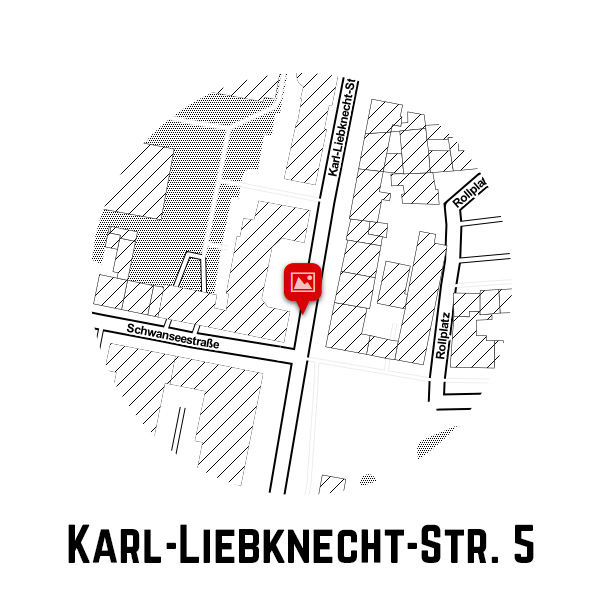Friedrich Justin Bertuch’s Bilderbuch für Kinder
Nathan Deschamps
Disclaimer: This article references racist language and appelations.
By 1790, Friedrich Justin Bertuch (1747–1822) was well on his way to building one of the most successful publishing companies of the late-eighteenth and early-nineteenth century in Germany. Der Verlag des Industrie-Comptoirs was based in Weimar and operated out of Bertuch’s estate on modern day Karl-Liebknecht-Straße 5 (now the Weimar Stadtmuseum). At its peak it employed up to 450 Weimar locals, producing some 2000 book and magazine titles. One of the most successful of these titles was Das Bilderbuch für Kinder, which ran from 1790–1830. The Bilderbuch was widely distributed; it was also one of Bertuch’s longest running publications selling up to 3000 copies per edition over forty years throughout Europe, making it an important source for its role in disseminating images of the colonial world.
Decades before Germans established their own colonial empire (Deutsches Kolonialreich) in Africa, Oceania and China since the 1880s, the Bilderbuch played a pivotal role in developing a ‘colonial imagination’ among the burgeoning middleclass (Bildungsbürgertum). By themid-eighteenth century, a new social class of Germans was emerging. This educated class of non-noble birth continued to grow toward the end of the eighteenth century. They looked outward with a curious disposition to anything from the newest fashions from London and Paris to the newest literature in the European book market. As information became more accessible and widespread, curiosities about the strange, magnificent, and ‘exotic’ came to the fore in the popular culture of the day. Travel journals from British, Portuguese, Spanish, French, and Dutch explorers about their adventures to ‘exotic’ places became common fixtures in the homes and Salons of the Bildungsbürger. This turn outward was facilitated by publications that sought to stimulate the imaginations and intellects of their readership via the presentation of ‘exotic’ natural wonders, colonial places and colonised people. To this end, children—the next generation of the Bildungsbürgertum—were no exception; their imagination and intellect were directly appealed to by the publications created in Weimar. Today, Bertuch’s Bilderbuch für Kinder continues to be an important example of the relationship between colonialism, science, and popular imagery.
Bertuch’s Das Bilderbuch für Kinder was meant to be an amusing collection of images with minimal text that would stimulate the imaginations of children while educating them on the wonders of nature. Bertuch exclaimed that his children’s books “must contain, where possible, strange, rare, but instructive items that the child does not already see daily.” In its first year of publication in 1790, Bertuch announced his new Bilderbuch in the Intelligenzblatt of his other extremely successful publication, Das Journal des Luxus und der Moden:
„Das Bilderbuch für Kinder enthält eine nützliche Sammlung von Tieren, Pflanzen, Blumen, Früchten, Mineralien, Trachten und allerhand anderen Unterrichtsgegenständen aus dem Reiche der Natur, der Künste und Wissenschaften, alle nach den besten Originalen gewählt und gestochen und mit einer kurzen wissenschaftlichen und den Verstandeskräften eines Kindes angemessenen Erklärung begleitet.“ „[The picture book for children, contains a useful collection of animals, plants, flowers, fruits, minerals, costumes and all sorts of other teaching objects from the realms of nature, the arts and sciences, all selected and engraved according to the best originals and accompanied by a concise scientific explanation appropriate to a child’s intellect].“
The concept behind the Bilderbuch was to introduce children to an ‘encyclopedia’ of images for the purpose of education and amusement. However, the editions of the book did not follow a rigid set of scientific guidelines. Rather, each edition appeared more like a cabinet of curiosities than a structured, systematic collection of images and information. It is in this ambiguous, subliminal space that the presentation of images takes on an important role in shaping what can be termed the “colonial imagination.” It is the curation of this “colonial imagination” that instilled a problematic perspective of the ‘exotic’ things that one could only find in the as of yet ‘uncivilised’ corners of the world. To this end, there were seldom any distinctions between the nature of plants and animals or people and cultures. The lines were blurred, and therefore, so were perceptions of life outside of metropolitan Europe.
Das Bilderbuch
In a single edition of the Bilderbuch, one can find an entry on an ‘exotic’ species of ape in Java followed by an entry on a colonial settlement in Singapore or Mexico. Each entry offers pictures and a short text. In the case of “Javanese apes,” basic details of the ape’s appearance are offered to the reader:
“Sein Gesicht ist hässlich, was den hervorragenden Augenbogen, den tief liegenden Augen, der breiten platten Nase, mit großen seitwärts stehenden Nasenlöchern, den eingefallenen Backen und dem fast ganz fehlenden Kinn zuzuschreiben ist, wozu man noch den großen nackten Sack unter der Kehle rechnen muss. Der ganze Körper ist mit langen, dicken, weichen dunkelschwarzen, glänzenden den Haaren bedeckt, die, wie bei mehreren Affenarten, am Vorderarme rückwärts stehen. Besonders merkwürdig ist die Vereinigung des Zeige- und Mittelfingers (Abb. 1).”
Descriptions of the essentialized features of different species is a key dimension of the encyclopedic, scientific style that the Bilderbuch employed for its entries. This breakdown of the most obvious, identifiable features, though somewhat crude, can be easily excused in reference to plants, minerals, and animals, however it takes on a different, more controversial meaning when applied to entire cultures, races, ethnicities, religions, and colonial geographies. It is in these controversial entries that one can find a host of colonial and imperialist tropes relating to the ‘exotic’ and ‘strange’ ‘discoveries’ of European explorers, colonists, and scientists throughout the world. Yet it is also within these entries that the line between the natural world of plants and animals is blurred with the world of humanity, society, culture, non-European life and land. The unintended consequences of such depictions and descriptions is the curation of a particular perception of colonised people as strange, animalistic, and uncivilised.
Visual Representations of the ‘Strange’ and ‘Exotic’
The Bilderbuch contains numerous entries on the “merwürdige” or strange parts of the world. At times, these entries refer to a “Merkwürdiger Inselberg” Bd. IX. No. 50; at other times, it refers to a mountain in Java: “Merkwürdige Berge (Bd. IX No. 74)” or exotic marshland birds (Bd. IX. No. 18). In the same style as the descriptions of mountains, islands, and birds, one can find articles on “varieties of strange people: “Merkwürdige Menschen Varietäten” Bd. IX. No.59.
One entry discusses the discovery of a “merkwürdige”: south African woman, Sarah Baartman, who had been kidnapped and put on display in Paris where she later died in 1816 (Abb. 1). The article does not offer Sarah’s name to the reader. Rather, Sarah is described as grotesque curiosity—a sexualized object.
“Die unter dem Namen der Hottentotischen Venus in Paris berühmt gewordene und daselbst 1816 gestorbene Südafrikanerin, gehört zu der Boschimansrasse, wo die Weiber sich durch einen sonderbaren Vorsprung der Hinterbacken auszeichnen. Dieser Vorsprung besteht aus bloßem Fett und ist so stark, dass, nach der Erzählung der Reisenden, die Mütter ihre kleinen Kinder darauf setzen und tragen.“
In the months after her death, Sarah’s fetishized body was put on display in the Museum of Natural History in Angers, France. A cast of her body as well as her skeleton stood next to other so-called merkwürdige curiosities from the colonial world. She remained on display until 1974.
Just as the Museum of Natural History in Angers made no distinction between Sarah and other ‘natural wonder’s, neither did the Bilderbuch. Indeed, the distinction between typical natural wonders like tropical birds or large Himalayan mountains, and human beings like Sarah is practically non-existent in the Bilderbuch. Accordingly, the imaginations and intellects of the book’s child and adult readers were directed toward a set of tacit assumptions concerning the relationship between race, geography, and nature. The non-European world in the early-eighteenth century was bizarre, untamed, and animalistic. Non-European ‘people’ and animals were both parts of this same world, lacking the kinds of distinctions one would find in descriptions of the cultural differences between people from Österreich and Preußen. The dignity of cultural distinction is replaced by the indignity of amusement and wonder towards the strange, beautiful, and grotesque offerings of the uncivilised world. Racism is either implicitly or explicitly stated—it is always directed at persons like Sarah and never at European colonists, explorers or scientists. This racist sentiment manifests in a number of forms, including in the Bilderbuch’s entries on colonial places and geographies.
The Trope of Discovery
In many entries you can find descriptions of places discovered by explorers. For example, the “discovery” of “cap de bonne espérance, on the cape of south Africa.[1] This entry discusses the discovery of the place and its colonisation by the Portuguese, and eventually the English. The description of the town’s ‘discovery’ mentions nothing about who inhabited the area before. The absence is informative. Accordingly, this Capstadt is depicted as a place waiting to be discovered and colonised; it was empty territory—terra nullius—another colonial trope.
With its description of the Capstadt’s geographical location in modern day South Africa comes a telling description of the town established there: “Die ansehnlichsten Gebäude sind das öffentliche Krankenhaus, das Sklavenhaus, der Kornspeicher, die reformierte Pfarrkirche, das Rathaus, und das Schiffswerft.” Each of these buildings, which are noted in terms of their significance, capture a colonial mindset. The metric for what makes a place noteworthy is the extent to which it has been tamed, seized from nature, and – in the perspective of the colonizers – “civilised”. To this end, the Sklavenhaus is mentioned with the same passivity as the other buildings—it is taken for granted, treated as part of the colonial infrastructure of the town, and normalised despite being antithetical to European notions of liberty. Liberty, however, is reserved for people, and slaves, according to the colonial system of the day, were not people—the Capstadt is a reflection of this philosophy of dehumanisation.
The accompanying picture of the town is drawn from a perspective that shows off the clean lines and grid of the small town with its European buildings (Abb. 3). The last line in the entry states: “Die Einwohner der Capstadt, welche Freibürger genannt werden, sind fleissig, gesellig, und gastfrei.” The Freibürger, in this case, refers not to any locals, but to the settlers who inhabit the town. Again, the only nod to the people who lived there before European settlement is implied by the existence of the Sklavenhaus. Evidently, the true locals fit in only as slaves. Whoever lived there before Europeans arrived is absent in the entry, they are erased.
‘Race’ and the Erasure of Culture
In the Bilderbuch,entire cultures are discussed without any clear concepts to guide their description. One entry will praise, with fascination and even admiration, the Javanese natives, while another entry will describe in animalistic terms, the “races” of Africans. Notions of beauty are used as metrics for the extent of their humanity. Accordingly, some “races” are somewhat beautiful or intriguing to the author, while others are simply “grotesque.” The ascription of culture to the various “races” depicted in the entries of the Bilderbuch is inconsistent and arbitrary. At times culture is mentioned, and at others it is subsumed in racialized, scientific language. Just as people are erased, so are cultures. In the most egregious cases, entire cultures are described not in terms of what they do, their customs, beliefs, or shared values, but by their racialized features and the ways in which these features make them desirable, not as partners or friends, but as slaves. Different groups are compared in terms of their physical features, beauty and temperament, always using gross generalisations that arbitrarily mix humanising and dehumanising language:
“Wir teilen hier aus dem interessanten Reisewerk der Engländer Denham, Oudney und Clapperton, acht Abbildung verschiedener N…stämme [gelöschte rassistische Fremdbezeichnung, Anm. d. Her.] mit, welche alle sogenannten Sudan wohnen. Die Leute in Bornu, die sich selbst Konowry nennen, haben große ausdruckslose Gesichter, flache N…nasen, einen sehr großen Mund mit guten Zähnen und hohe Stirnen. Von Natur sind sie furchtsam und keineswegs kriegerisch. Die Bewohner von Loggun sind hübscher und klüger, als die Bornuer, ihre Nachbaren, besonders die Frauen, auch haben sie einen besseren Anstand als alle N…. Die hier abgebildete Frau, namens Funha, fiel den genannten Reisenden als eine der schönsten und angenehmsten unter der Menge auf, die sich neugierig herbeidrängte und Geschenke zu erhalten wünschte“ (Abb. 5–8, N…stämme aus dem innersten Afrikas, Bd. XI. No. 59).
It is in these racialized descriptions of the anatomical features of different “races,” interspersed between encyclopedic entries on birds and tortoises, that the Bilderbuch für Kinder forwards an epistemology of the colonial world that presents non-Europeans as mere specimens that can be organised into an encyclopedia. The effect of this style of presentation is that entire groups of people, their cultures and outward characteristics, are presented as organizable scientific features—a style of presentation that would persist in the entries of anthropological books written decades later—the riches and complexities of culture reduced and erased by a desire to describe life in the simplest scientific terms..
Enlightened ‘Knowledge’
The Bilderbuch is an artifact of its time, a trace of a European way of seeing and knowing. The emergence of books and encyclopedias outlining and introducing their readership to exotic worlds, cultures, people, plants and animals was common across Europe at the end of the eighteenth century. This period—the period in which the Bilderbuch hit the market—was the Aufklärung (Enlightenment), during which the organisation and systemisation of knowledge was a central task for scholars and thinkers across Western Europe. The Bilderbuch employed an Enlightenment aesthetic of systemisation which had grown in popularity and appeal; however, it packaged this aesthetic into a picture-book format aimed at children. Within its pages, one can find many curious examples of this style. At times the entries seem innocuous, at other times they are deeply problematic. It was, therefore, under the auspices of amusement and education that the Bilderbuch offered its readers an epistemic presentation of the natural world and the people and cultures who are depicted as its constitutive parts. What is presented as harmless topics of interest and curiosity turns out to shed light on a growing perception of the non-European world as a place of wild nature; rather than the domain of other people, cultures, ideas and values, the colonial world is depicted as exotic, grotesque, and uncivilised. In this sense, the Bilderbuch played a special role in fostering a certain kind of ‘colonial imagination’ in which Western prejudices bled into the “concise scientific explanation[s] appropriate to a child’s intellect.”
Abbildungen
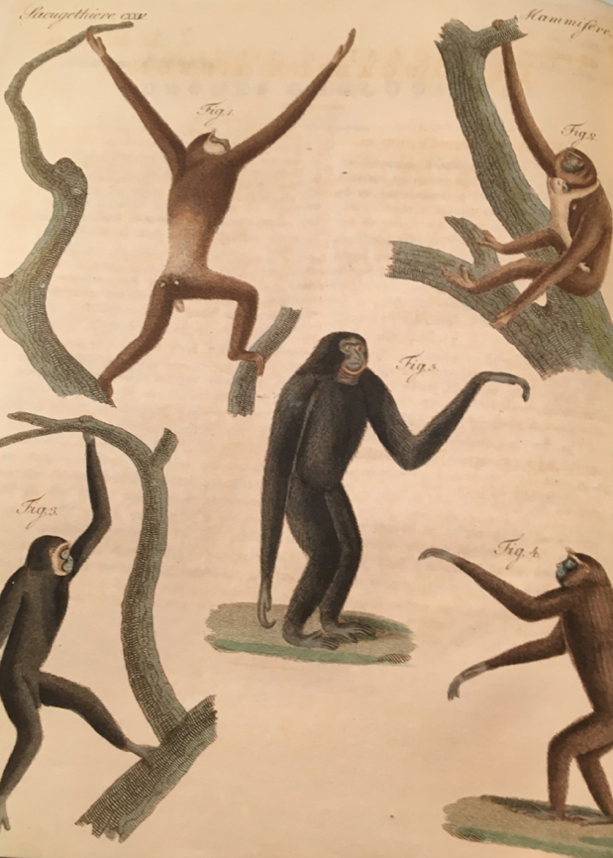
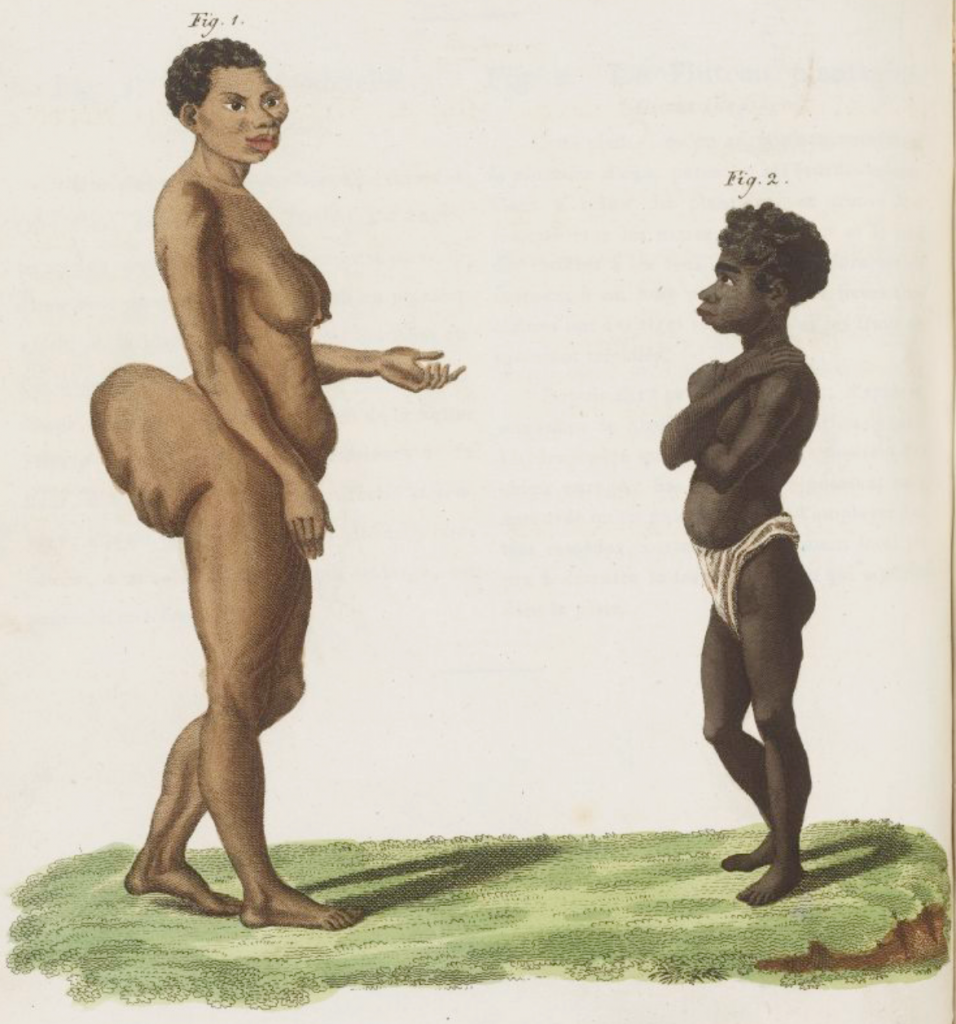
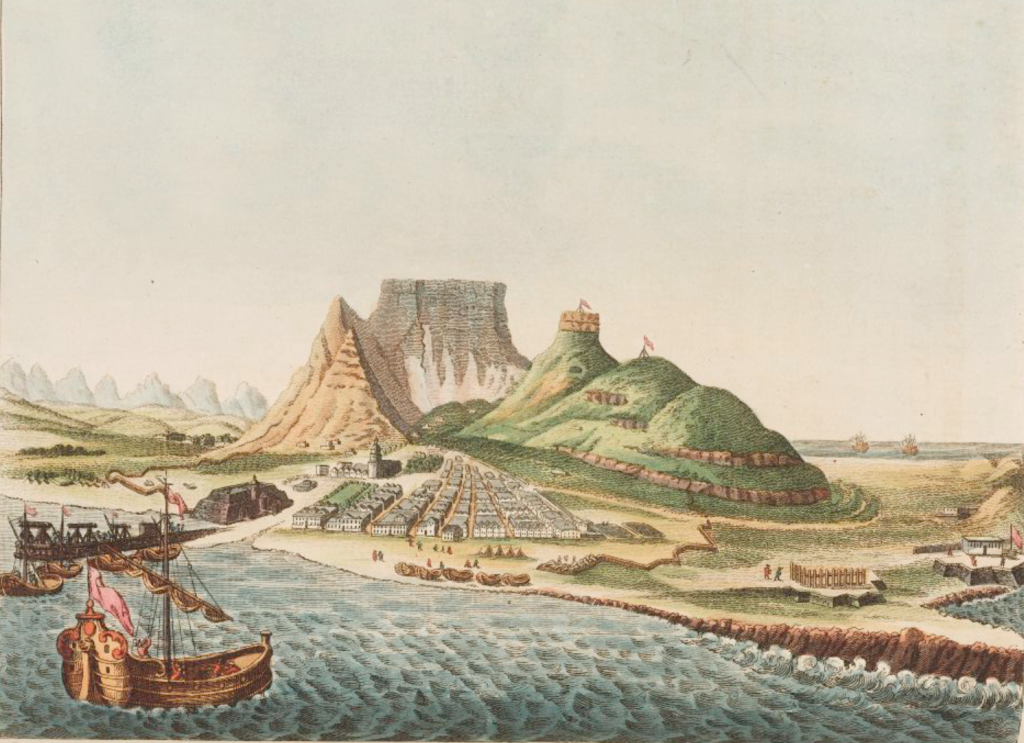

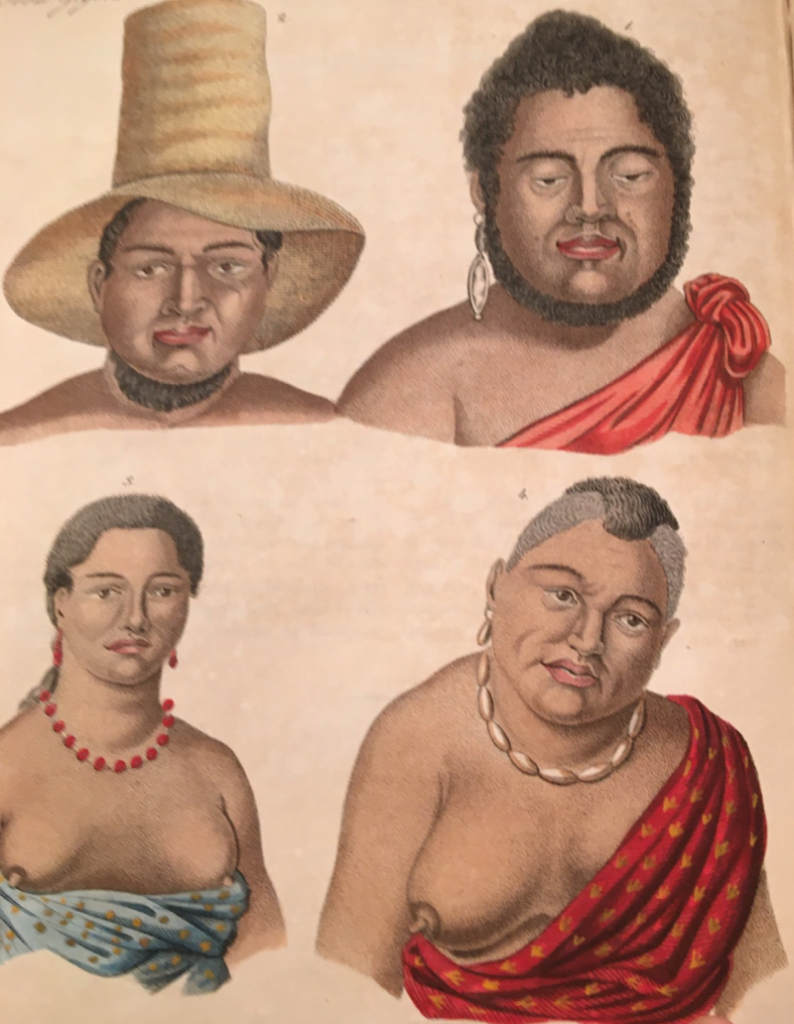
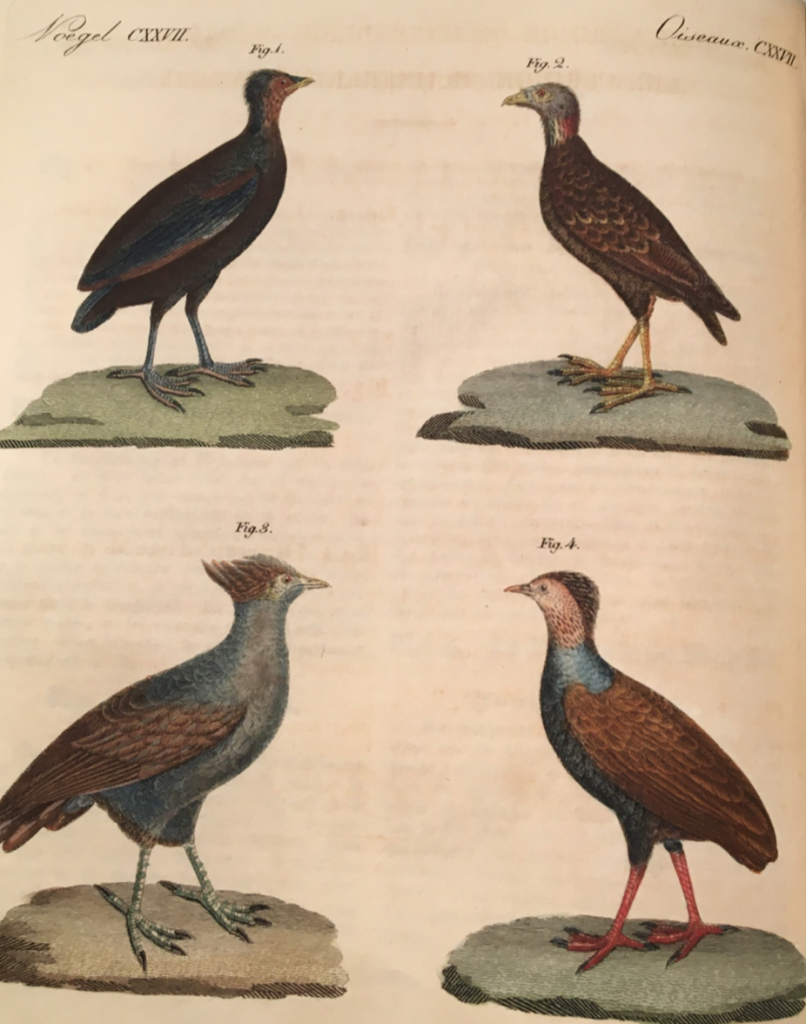
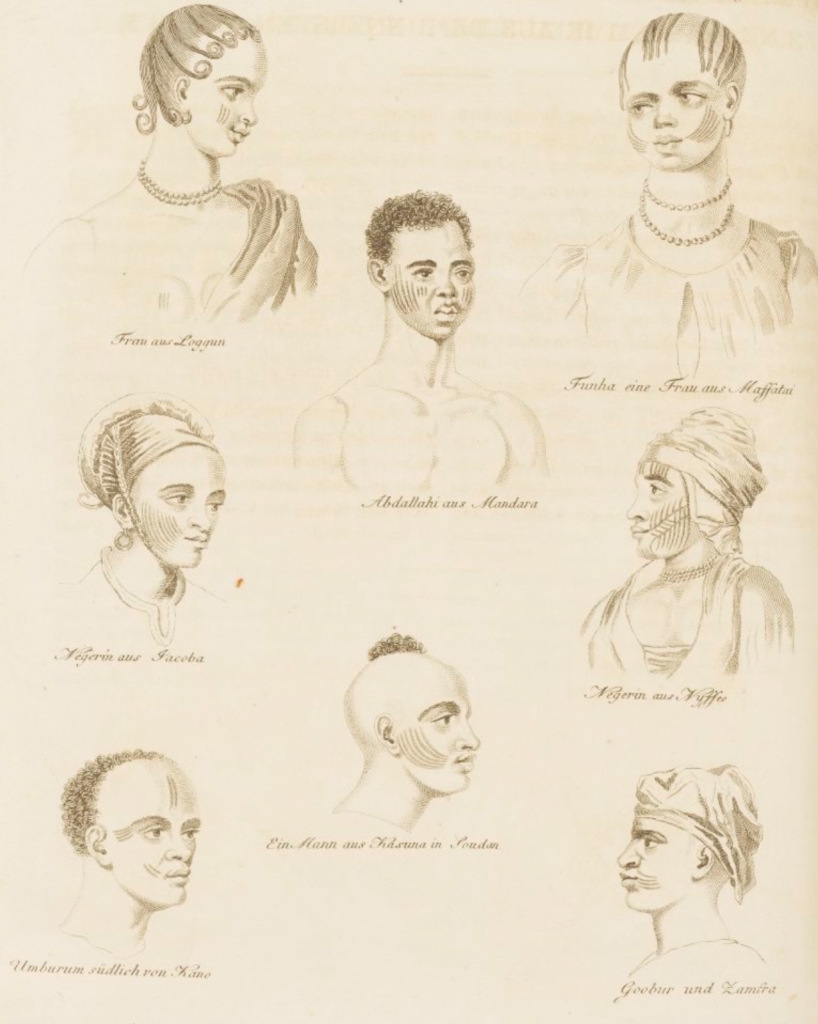

All of these images as well as the entire collection of the Bilderbuch are available as digitized open sources. They can be found at haab-digital.klassik-stiftung.de
Endnotes
[1] „Die Capstadt auf dem Vorgebirge der Guten Hoffnung” Bd. IX. No. 35.
